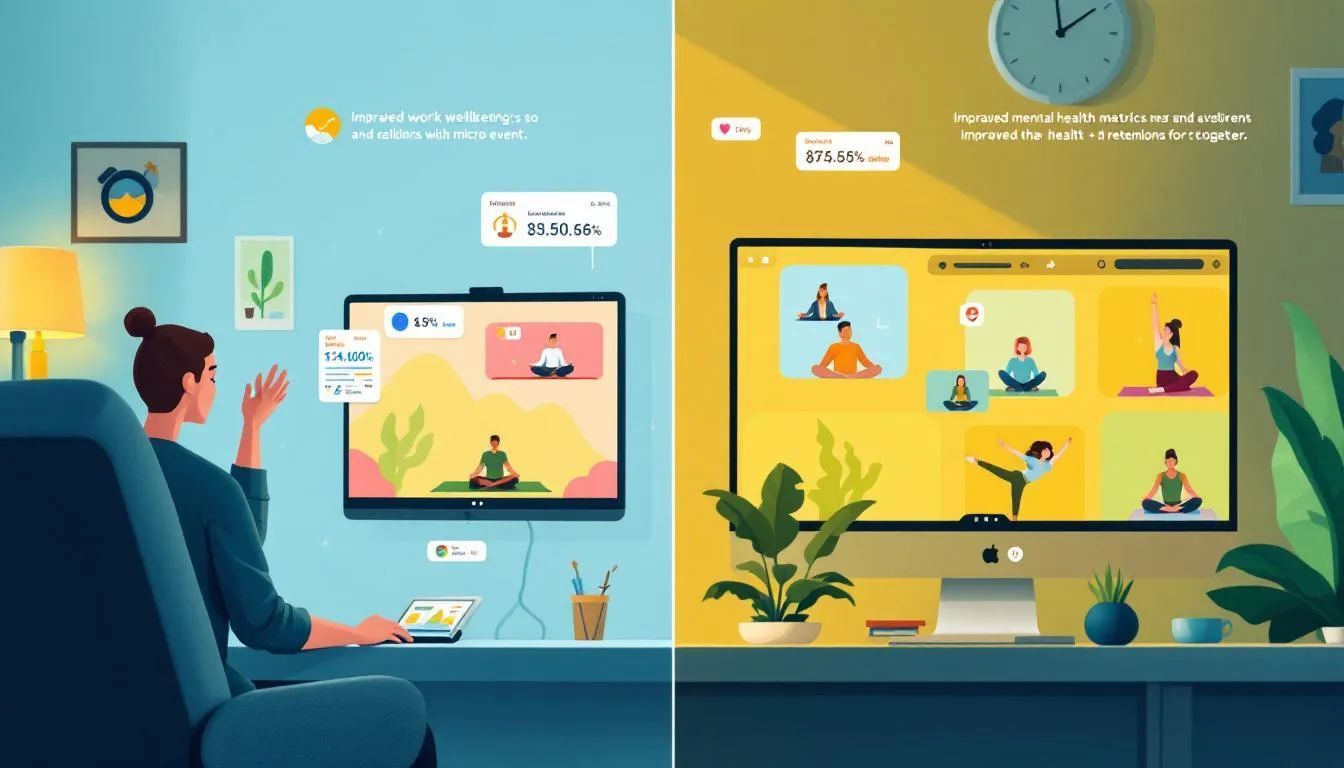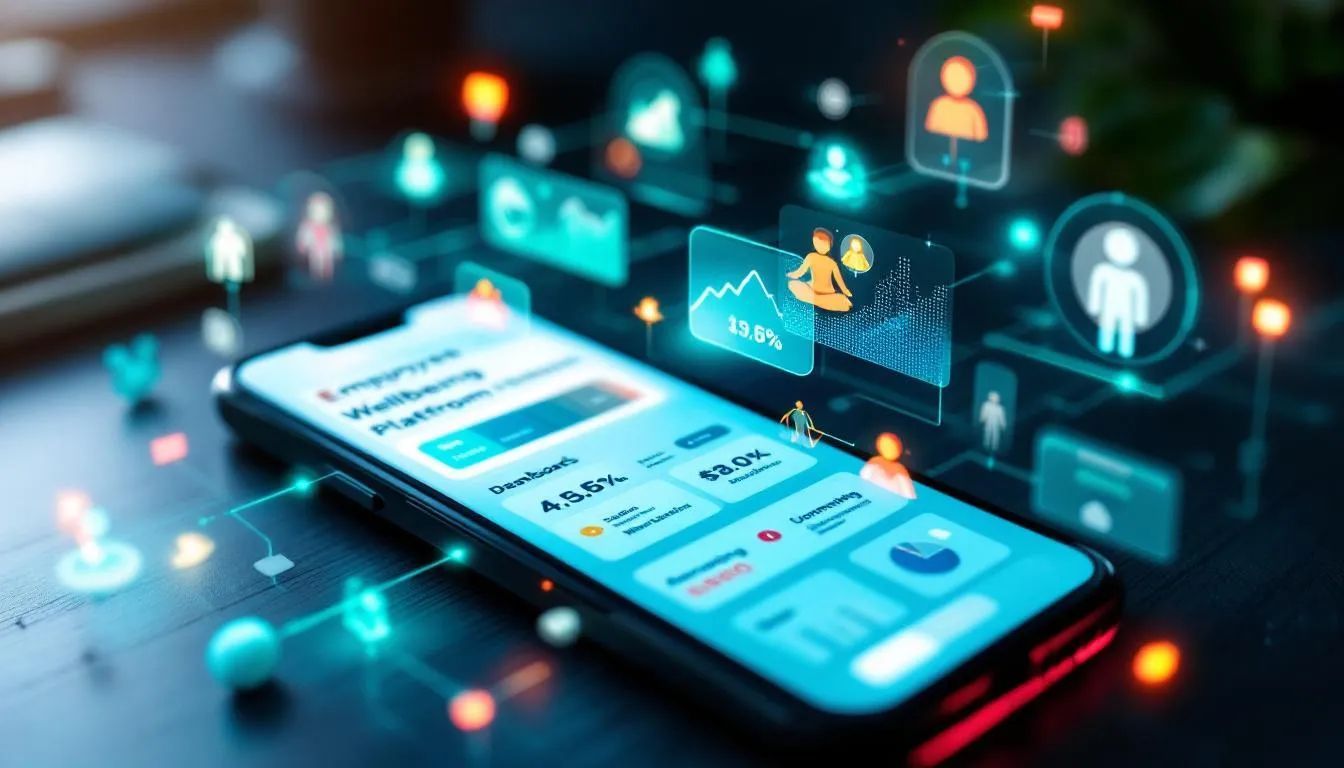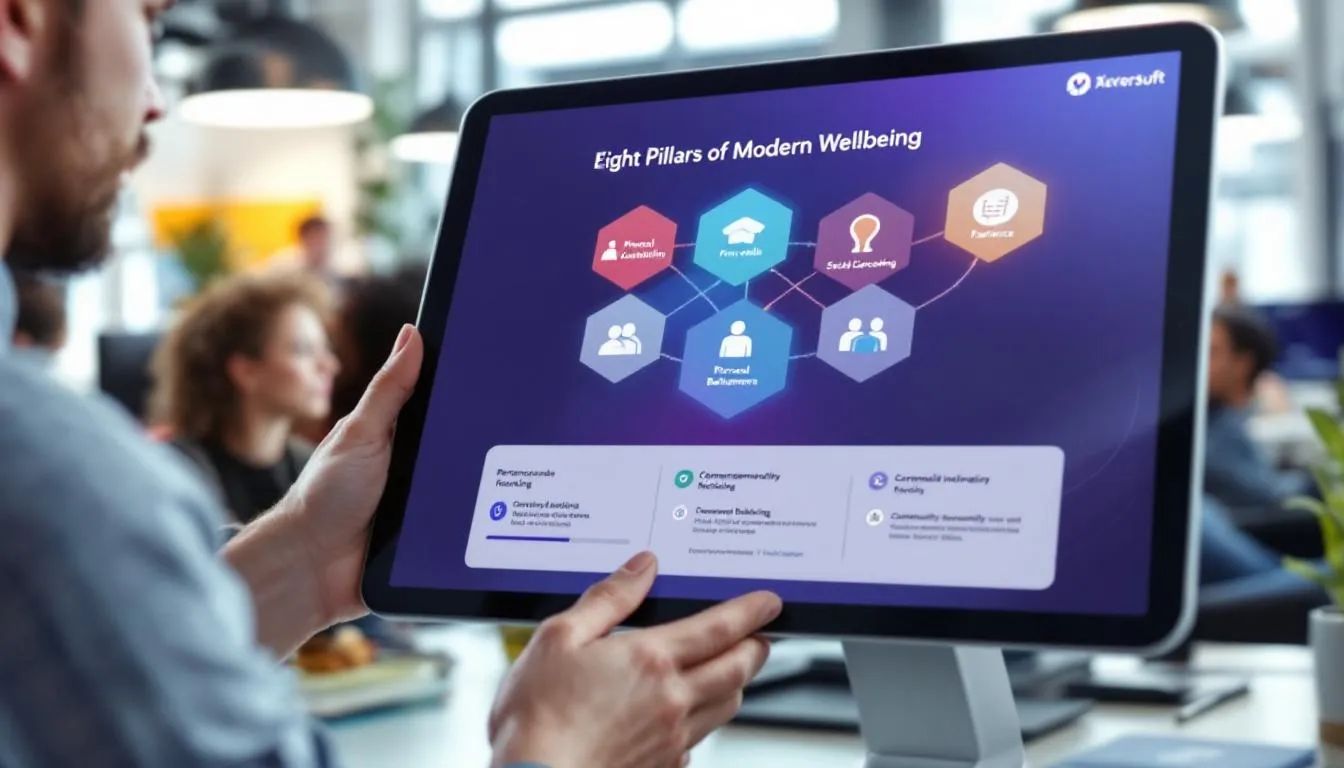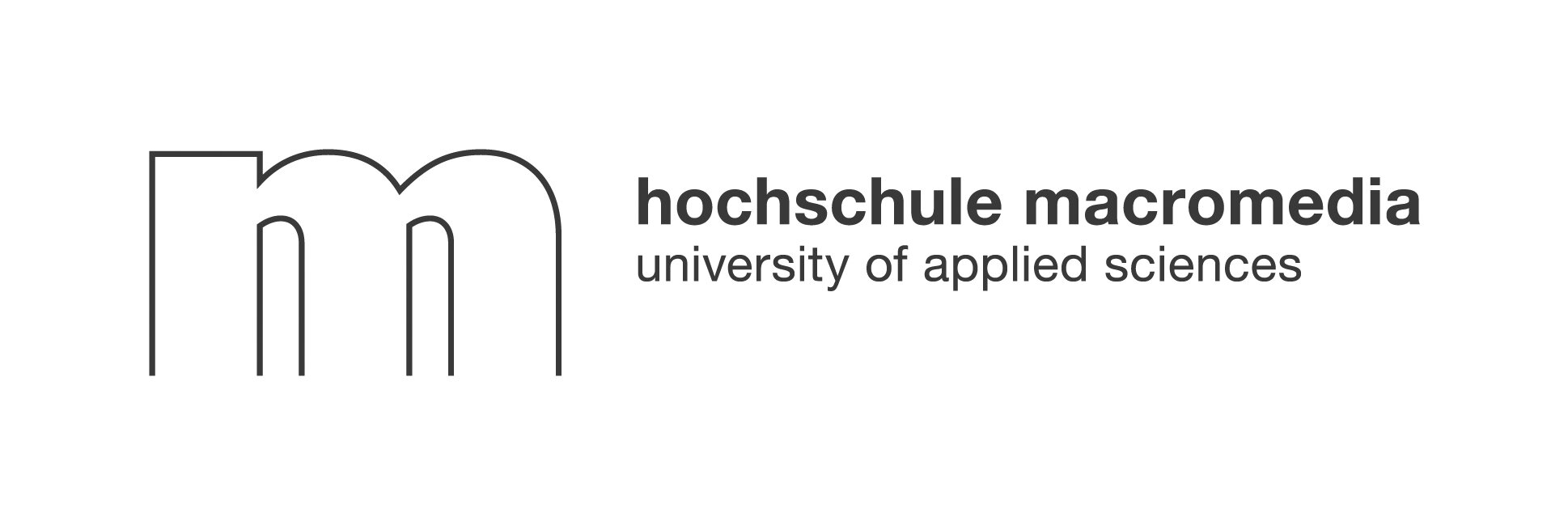Employee wellbeing platforms are no longer a “nice-to-have” in 2025—they’re essential. As hybrid and remote work reshape how teams connect, organizations are searching for smarter ways to nurture genuine engagement, boost morale, and foster a culture where people thrive. But here’s the open question: why do so many traditional wellness programs fall flat, and how can modern, AI-driven solutions like Neroia finally bridge the gap between intention and authentic, daily wellbeing?
This guide unpacks the core of what makes an employee wellbeing platform effective in today’s world, explores why the stakes are higher than ever, and shows how next-gen tools are revolutionizing workplace culture—especially for distributed teams.
1. What Exactly Is an Employee Wellbeing Platform?
An employee wellbeing platform is a digital hub designed to help organizations support their employees’ health, happiness, and sense of connection. Unlike standalone apps or one-off fitness challenges, a true platform brings together a wide range of wellness resources, social features, and analytics under one roof.
“A modern employee wellbeing platform is more than a step tracker or a meditation app—it’s the connective tissue that binds physical, mental, and social health into the daily fabric of work life.”
1.1 Beyond Fitness: The Eight Pillars of Modern Wellbeing
Gone are the days when “wellness” meant only gym discounts or fruit in the break room. In 2025, leading platforms—like Navigate and Wellable—embrace a holistic approach, supporting:
- Physical health (activity, nutrition, sleep)
- Mental and emotional health (stress management, mindfulness)
- Financial wellbeing
- Social connection and community
- Purpose and career growth
- Balance and mindfulness
- Personal development
- Community involvement
This eight-pillar model recognizes that true wellbeing is multi-dimensional. For example, platforms such as Wellness360 and Sprout offer resources ranging from financial coaching to mindfulness sessions, ensuring every employee can find support that fits their unique needs.
1.2 How Digital Tools Turn Strategy into Daily Habits
The real magic of an employee wellbeing platform lies in its ability to turn company values into daily habits. Through integrations with wearables, personalized content, and automated nudges, digital platforms help employees:
- Set and track personal goals
- Join group challenges or social activities
- Access on-demand wellness content
- Receive tailored recommendations based on interests and schedules
Neroia elevates this by using AI to curate micro-events—like yoga, Qigong, or cycling groups—for small cohorts, making participation effortless and organic. The result? Wellbeing becomes woven into the workday, not just a checkbox on a benefits list.
2. Why Employee Wellbeing Matters More Than Ever in 2025

The business case for investing in employee wellbeing platforms has never been clearer. With hybrid work now the norm, organizations face new risks and opportunities.
2.1 Productivity, Retention and the Bottom-Line Link
Research shows that companies using employee wellbeing platforms see measurable gains:
- Higher productivity (up to 18% boost, according to Navigate)
- Lower turnover (retention rates up to 89%)
- Reduced healthcare costs and absenteeism
When employees feel supported and connected, they’re more engaged and less likely to burn out or leave. Platforms that foster authentic, daily engagement—like those using AI-driven micro-events—help transform wellbeing from a corporate initiative into a competitive advantage.
2.2 Mental Health & Hybrid Work: The New Risk Factors
Hybrid and remote work bring flexibility, but also isolation, blurred boundaries, and rising stress. Generic wellness programs often miss the mark, leaving employees disengaged or overwhelmed.
“Nearly 9 out of 10 employees say workplace stress affects their mental health, yet traditional programs rarely address the real needs of hybrid teams.”
Modern platforms meet this challenge head-on by prioritizing mental health resources, peer support, and regular, small-group interactions. Neroia’s AI-driven approach ensures that even in distributed settings, employees can effortlessly discover and join meaningful activities with colleagues—breaking down silos and combating isolation.
3. Core Features Every Employee Wellbeing Platform Should Offer
To truly move the needle on wellbeing, a platform must deliver more than just content. Here are the must-have features for 2025:
3.1 Personalization Engines and Adaptive Journeys
Personalization is key. The best platforms use AI and analytics to tailor experiences to each employee’s preferences, schedule, and wellbeing goals. For example:
- Custom activity recommendations (e.g., yoga for stress, cycling for fitness)
- Adaptive learning paths for mental health or financial wellness
- Nudges and reminders aligned with individual routines
Neroia stands out by leveraging AI to match employees with micro-events and small-group activities that fit their interests and availability—no manual planning required.
3.2 Gamification, Challenges and Social Communities
Engagement thrives on fun and friendly competition. Top platforms (like Wellable and YuMuuv) offer:
- Gamified challenges with leaderboards and badges
- Team-based competitions to build camaraderie
- Social communities and chat for peer support
These features transform wellness from a solo task into a shared, motivating journey. Neroia’s micro-events add a new layer, making it easy for employees to connect in authentic, informal ways that foster real relationships.
3.3 Integrations: Wearables, HRIS and Analytics Dashboards
Seamless integration is essential for real impact. Leading platforms connect with:
- Fitness trackers (Fitbit, Apple Health, Garmin)
- Virtual wellness apps (Headspace, Wellbeats)
- HR systems (Workday, SAP SuccessFactors)
- Collaboration tools (Slack, Microsoft Teams)
This enables real-time tracking, automated participation data, and robust analytics for HR leaders. Neroia integrates with these tools while maintaining privacy, using anonymized data to provide actionable insights without compromising employee trust.
4. How to Choose the Right Employee Wellbeing Platform for Your Workforce
Selecting the best platform means balancing features, fit, and future-proofing. Here’s how to make a confident choice.
4.1 Defining Success Metrics and Budget Bands
Start by clarifying your goals:
- What outcomes matter most (engagement, retention, health metrics)?
- What budget is available for setup and ongoing costs?
- How will you measure ROI (participation rates, healthcare savings, survey feedback)?
A clear framework ensures you choose a platform that aligns with your organization’s unique needs.
4.2 Must-Ask Vendor Questions During Demos
Before you commit, ask vendors:
- How does your platform personalize experiences for diverse employees?
- What integrations are available (wearables, HRIS, collaboration tools)?
- How do you support engagement in hybrid or remote settings?
- What analytics and reporting capabilities are included?
- How do you ensure data privacy and security?
“The best employee wellbeing platforms make it easy for employees to engage on their own terms—wherever, whenever, and however works best for them.”
4.3 Red Flags to Watch Out For
Be cautious if a platform:
- Relies heavily on generic, one-size-fits-all content
- Lacks integration with key tools or devices
- Offers limited analytics or no way to measure impact
- Ignores privacy or uses personal data without clear consent
A modern solution should feel intuitive, adaptable, and trustworthy.
5. Top Employee Wellbeing Platforms Compared

Here’s a quick comparison of leading solutions, each excelling in different areas:
5.1 Holistic All-in-One Suites (Wellable, Navigate)
These platforms offer a broad spectrum of wellness resources—from fitness and nutrition to mental health and financial wellbeing. They’re ideal for companies seeking a single, unified hub for all things wellness.
5.2 Mental-Health-First Solutions (Headversity, Calm)
With a focus on psychological safety and resilience, these solutions provide tools for stress management, mindfulness, and ongoing mental fitness—crucial for today’s hybrid teams.
5.3 Gamified Challenge Leaders (YuMuuv, Sprout)
If engagement is your top priority, gamified platforms excel at driving participation through challenges, leaderboards, and social features. They make wellness fun and communal.
6. Implementation and Engagement Best Practices
A successful rollout depends on planning, communication, and ongoing support. Here’s how to maximize adoption and impact.
6.1 Launch Roadmap: From Pilot to Company-Wide Rollout
- Pilot: Start with a small, diverse group to test features and gather feedback.
- Customize: Tailor activities and communications to your company culture.
- Train: Offer interactive demos and resources to onboard users smoothly.
- Communicate: Launch with clear, upbeat messaging about benefits and how to participate.
- Scale: Roll out to the wider organization, using data to refine and improve.
6.2 Driving Adoption with Incentives, Champions and Comms
- Use targeted incentives (gift cards, recognition) for early engagement.
- Identify “wellbeing champions” to inspire peers and share experiences.
- Maintain regular, friendly communication—highlighting new activities, success stories, and upcoming micro-events.
Neroia’s approach shines here: its AI-driven micro-events are automatically matched to employees’ interests and schedules, making participation feel easy and natural. This reduces planning friction and ensures ongoing engagement, even for remote or hybrid workers.
7. Measuring ROI and Sustaining Long-Term Success
To prove value and drive continuous improvement, measurement is key.
7.1 Key Performance Indicators: Participation to Healthcare Savings
Track metrics such as:
- Participation rates in activities and challenges
- Engagement with wellness content
- Health outcomes (reduced absenteeism, improved self-reported wellbeing)
- Cost savings on healthcare and turnover
“The most impactful platforms provide transparent analytics, helping organizations see real progress and adjust strategies as needed.”
7.2 Continuous Improvement: Using Data to Refine Programs
Top platforms—like Neroia—use anonymized analytics to identify trends, gaps, and opportunities. By continuously refining recommendations, adding new micro-events, and responding to employee feedback, organizations can keep wellbeing programs fresh, relevant, and effective.
Neroia’s Vision: Revolutionizing Employee Wellbeing for the Hybrid Era
Traditional wellness initiatives often struggle to sustain engagement—especially in hybrid environments where employees feel disconnected or overlooked. Generic step challenges and sporadic webinars can’t replace the need for real, human connection.
Neroia is changing the game. By harnessing artificial intelligence, Neroia curates small-group micro-events (like yoga, Qigong, and company runs) tailored to individual interests and schedules. Employees can effortlessly discover and join activities, breaking down silos and fostering authentic connections—no matter where they work.
Neroia’s platform integrates seamlessly with fitness trackers, virtual wellness apps, and collaboration tools, while protecting privacy with anonymized data. The result is a closed, secure community where every employee feels seen, supported, and empowered to thrive.
In 2025 and beyond, Neroia stands out as the employee wellbeing platform that brings people together, drives measurable impact, and transforms workplace culture—one authentic connection at a time.




